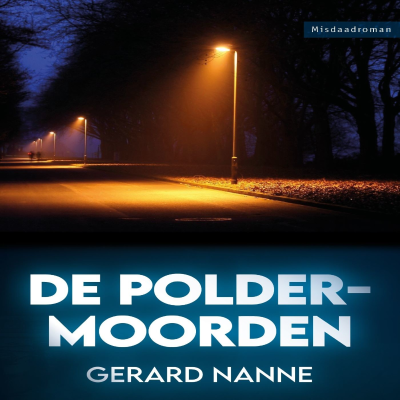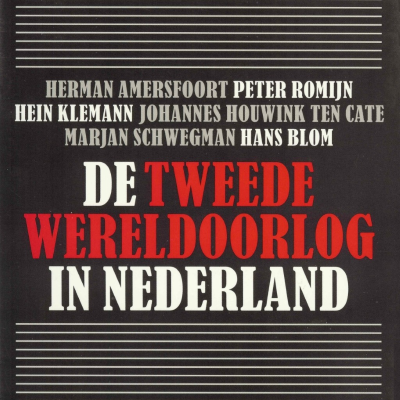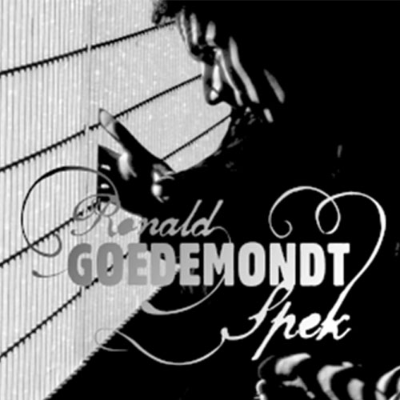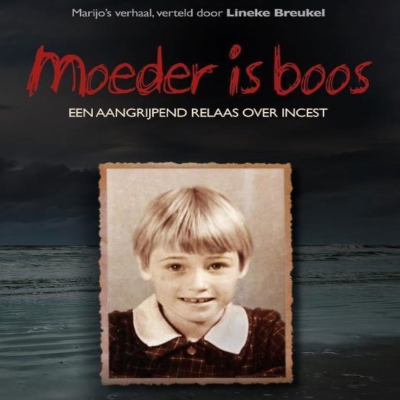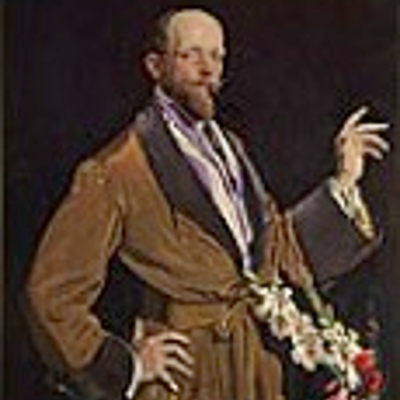
National Gallery of Australia | Audio Tour | George.W.Lambert Retrospective
Podcast door National Gallery of Australia
Probeer 14 dagen gratis
€ 9,99 / maand na proefperiode.Elk moment opzegbaar.

Meer dan 1 miljoen luisteraars
Je zult van Podimo houden en je bent niet de enige
Rated 4.7 in the App Store
Over National Gallery of Australia | Audio Tour | George.W.Lambert Retrospective
Audio guide to seventeen key works from the 2007 NGA George.W.Lambert Retrospective : heroes & icons shown at the National Gallery of Australia, Canberra. 29 June – 16 September 2007
Alle afleveringen
17 afleveringenIn Lotty and a lady , Lambert presented an apparently everyday kitchen scene in which the housemaid, Lotty, is in command of her kitchen, looking out comfortably at the viewer. The lady, with head in profile and dressed for outdoors in hat and gloves, occupies the upper left of the scene. On the table is a carefully arranged still life with two fish, observed with precision. Neither mistress nor maid engage with these objects. They are lost in thought, posed as the still life. The model for the lady was Thea Proctor. The model for ‘Lotty’ was Lottie Stafford, a Cockney washerwoman living in the slum cottages of Paradise Walk in Chelsea. She was a popular model on account of her naturalness, total self-assurance and subtle sensuality. She had a ‘swan neck’ which greatly appealed to William Orpen, and which he emphasised in the series of works he painted around 1905 – including The wash house 1905 (National Gallery of Ireland, Dublin) – that deal with working-class themes. Lottie also posed for British artists William Nicholson and Walter Sickert. Lambert painted the work with assured brushstrokes in a restricted palette. He used broader paintwork for the main elements of the picture, with some remarkable crisp flicks of paint, and a more detailed and delicate handling for his depiction of the fish and other still-life details in the foreground. Lambert’s painterly approach and careful design reflects his desire to paint in the manner of Velázquez, and the image resembles Velázquez’s Kitchen scene with Christ in the house of Martha and Mary 1618 (National Gallery, London). As in a number of Velázquez’s works the viewpoints are organised so that we see the table and the objects from above while looking directly at the figures. But Lambert also suggested that he could not have painted Lotty’s head had he ‘not been so impressed by the work of Manet’ (ML MSS A1811, p.72). This apparently straightforward genre scene may also have symbolic significance. Lambert may have intended to depict one of the themes of Velázquez’s painting, the contemplative versus the active life, with the lady representing the contemplative or leisurely life and Lotty the world of work, necessary for the contemplative life. Lambert may also be presenting two aspects of one woman, the elegant public face as opposed to the domestic private self. Further, this painting may also be a comment on class relations. By portraying a housemaid sitting in the kitchen together with the mistress of the house, Lambert challenged traditional Edwardian social roles and behaviours. At this time servants were urged to make themselves invisible when in the presence of their employers, and to this extent the scene is stage-managed. Lotty is posed in a subversive manner with her hand defiantly on her hip, and she wears earrings, something that might be considered unusual for a servant girl. The subject is similar to those of several of Lambert's Bulletin illustrations in which he portrayed a mistress with a confident servant – with the servant usually getting the better of her mistress. The painting was acquired by the National Gallery of Victoria at the insistence of Sir Walter Baldwin Spencer, a gallery trustee, from its exhibition at the Guild Hall, Melbourne, in 1910. It was the first of Lambert's European paintings to be purchased for an Australian public collection, and the only one to be purchased while he lived abroad.
Chesham Street is one of a group of ‘puzzle pictures’ that Lambert painted between 1910 and 1914. These paintings appear to have a meaning and yet are not strictly narrative; they invite the viewer to provide their own interpretation. This is a bravura work that demonstrates Lambert’s considerable technical prowess but, more than this, it is a challenging and demanding image which asks ‘who is this man and what is going on?’. The man sits boldly in front of the viewer, holding up his shirt and revealing his entire torso. His head is held high, his lips are closed and he looks down at the viewer. His pale flesh, with the play of light on it, gleams against the dark surroundings. Lambert’s friend Hardy Wilson names ‘Williams, Lambert’s model’ as the source for the patient being sounded by a medical man (Wilson 1930, p.93) and Thea Proctor stated that it was the same model, once a sailor, who posed for the king in The shop(Thomas 1962). However, the features of the half-clad man resemble those of Lambert, and it is probable that Lambert intended to suggest a self-image (using the model’s body for the torso). The picture has been read narratively as a scene in a consulting room with a doctor examining the heart or lungs of his patient. Although Lambert does depict such a scene, this is not the subject of the painting, but the excuse for the composition. Dramatically, the painting is not about a physical examination at a specialist’s room in Chesham Street, London, but rather the psychological intrusiveness of that process. In 1901, Freud published his Psychopathology of everyday life and, during the decade, his ideas about exploring the psyche gained wider understanding. This man seems to have nothing to hide, to be literally and metaphorically baring his chest, exposing his heart and soul to the world. Contemporary critics in Britain, such as P.G. Konody in the Observer on 27 May 1910, acknowledged the ‘truly masterly painting of a male form’. When the painting was later exhibited in Australia, Lambert’s friends also recognised that the subject provided a splendid opportunity for the presentation of nudity. But this is not strictly a male nude. The figure is not naked; he is half clothed and is intentionally shown in this way to give the image greater impact and to make it more sexually charged. Lambert also had a technical concern in painting this work: he used the subject as an opportunity to depict the male torso using a monochromatic approach, with the play of light on the pale surface of the skin contrasted against the shaded head
George LAMBERT, The charge of the 3rd Light Horse Brigade at the Nek, 7 August 1915 1924, oil on canvas, 152.5 (h) x 305.7 (w) cm, Australian War Memorial, Canberra, commissioned in 1919, acquired in 1925
The squatter’s daughter created a stir in Australia when it was first exhibited in 1924 because Lambert was concerned with creating a new way of painting Australian landscape. He assimilated the blue-and-gold palette that Streeton had used to convey the heat and glare of the Australian scene, but he moved from an intuitive response to the land to a more formalist approach. He counterbalanced the strong verticals of the trees with the triangular shape of the hill and the horizontal streak of green grass in the lower centre of the picture. He painted with tight, controlled brushstrokes, so the image seems still, but lifelike, with the trees and grass embalmed by a sharp, scintillating light. He observed in around 1927 that ‘when the Apple gum gilded by the dying sun comes up for technical analysis, the memories of Giorgione’s famous tree ... make it look more beautiful’ (ML MSS 97/8, item 5). The illusionism of the scene encourages us to look at it as an image of a particular person in a specific place at a certain time – as a picture of Gwendoline ‘Dee’ Ryrie in white shirt and jodhpurs leading her horse (which Lambert had given her) across the family property, Micalago, during the Christmas and New Year of 1923–24. Lambert’s prime interest, however, in The squatter’s daughter was in conveying a universal squatter’s daughter. He gave it a generic title rather than the specific ‘Gwendoline Ryrie at Micalago’ , to indicate that it was an image of Australian life. Lambert attacked the intuitive approach to landscape and, in response, critics such as Howard Ashton maintained that Lambert’s work lacked emotion. But this was his aim. He advised young landscape painters that there was always perfect design in nature and that they should reduce it to definite forms, as he had simplified the mass of the hill and sharpened its outline in The squatter’s daughter . He portrayed the figure of the squatter’s daughter as if she were located artificially in her environment, as if she were a cut-out shape pasted onto it. He described her as passing ‘gracefully across the foreground’ and looking ‘like a figure on a Greek vase’ (ML MSS 97/8, item 5), indicating that he purposely presented her in profile in an arranged pose and detached from her setting. He intentionally created a stylised view. That the girl is not immersed in the landscape (as in A bush idyll c.1896, cat.3), but merely passes across the land, is appropriate. By the 1920s many Australian landowners did not need to work their properties themselves but were able to employ others to do so, and a number of city dwellers had the time and money to visit the rural areas for their health and for recreation. The squatter’s daughter reflects this new relationship of Australians with the land. Lambert’s formalist response in this paintinginspired other painters. Hans Heysen wrote on 20 August 1924 that it was ‘different from anything else painted in Australia’ (ML MSS 285/87), and in 1930 that it was a picture which ‘in its search for character and form’, was ‘an object lesson for the young landscape painters of Australia’ (Lambert 1930). In 1931, Lionel Lindsay commented: When the ‘Squatter’s Daughter’ was first shown, to the best of my knowledge, only three Australian artists proclaimed its originality and truth. Such a break with suave sentiment and surface drawing met with a protective opposition – here was almost attack upon established income. It was pronounced hard, untrue, unsympathetic. To-day we know this landscape to possess the largest local truth, supreme draughtsmanship and design, and to exhale the very spirit of Australia (AA 1931). As a result of Lambert’s example and his denunciation of the sentimental Australian landscape, artists began to make changes in their work. They came to believe that they should now explore organic form, seek greater simplicity and use sharper contours. Lambert thought highly of The squatter’s daughter , asking 500 guineas for it at a time when he received only £500 for his most significant battle painting, The charge of the 3rd Light Horse Brigade at the Nek 1924 (cat.95), on which he worked for several years. Lambert sold The squatter’s daughter to George Pitt-Rivers in England in 1926. Henry Lawson had published a poem called ‘The squatter’s daughter’ in 1889, of which Lambert no doubt was aware. It related the story of a wealthy squatter who encouraged his daughter to become engaged to a wealthy lordling; however, she elopes with a stockman instead. Eventually the father becomes reconciled with the daughter and son-in-law. In 1910 a silent film was produced, based on a 1907 stage melodrama with the same title and same cast. It was written by Edmund Duggan and Bert Bailey. In 1933 The squatter’s daughter , a sound film, featured a strong young horsewoman in jodhpurs who saves the family property.
In Self-portrait with gladioli Lambert deliberately depicted himself as a precious, self-assured aesthete. In this, he visualised the thoughts expressed in a letter to Amy on 25 November 1921: I am a luxury, a hot house rarity ... Scoffed at for preciousness. Despised for resembling a chippendale chair in a country where timber is cheap (ML MSS 97/10, p.379). He was a dedicated artist who worked to the point of exhaustion, but he portrayed himself, not as he was, but as the affected, self-admiring dandy he thought others considered him to be. To paint himself thus required, as the critic for the Australasian newspaper suggested on 24 February 1923, ‘courage, self-analysis and amazing technical skill’. His gaze is quizzical; he placed himself under self-scrutiny. He stood in an apparently careless attitude, but studiously posed, with his hands splayed out and showing ‘articulations of nerve and sinew’. Lambert was elected an Associate of the Royal Academy on 23 November 1922 – the only Australian painter ever to be so honoured. This self-portrait might be viewed as Lambert’s statement of achievement. He stands smiling, in his artistic brown velvet gown, with a purple scarf around his neck and a vase of gladioli before him, like someone who has just received a medal on a ribbon and a bouquet of flowers. In other self-portraits such as Self-portrait c.1907 (cat.37) he depicted himself with a paintbrush in hand, but here he showed himself posing. Lambert’s stance in this portrait resembles that of the first President of the Royal Academy, Sir Joshua Reynolds, in his Self-portrait c.1780 (Royal Academy, London), in which, dressed in his academic robes, he stands aristocratically with his right hand on his hip (although not with his left arm raised). Lambert’s pose could also be viewed as a witty adaptation of the classical marble sculpture, the Hermes Logios , an image of the god of eloquence, who, like Lambert in this portrait, stands with one arm raised, as if speaking. Gladioli are the birth flower of those born between 22 August and 22 September, as Lambert was. Gladiolus is derived from the Latin word gladius , meaning sword, on account of the shape of its leaves, which look like a two-edged sword; gladioli are sometimes known as sword lilies. In Roman times the flowers were presented to victorious gladiators. The flower is thus a symbol for victory. It can also symbolise strength of character. But in addition to being a portrait of achievement and victory, this painting is also a portrait of jest, of self-mockery. It is an image which brings to mind the lines in Gilbert and Sullivan’s Patience (1881), which caricature the aesthete: Though the Philistines may jostle, you will rank as an apostle in the high aesthetic band, If you walk down Piccadilly with a poppy or a lily in your mediaeval hand. And every one will say, As you walk your flowery way, ‘If he’s content with a vegetable love which would certainly not suit me, Why, what a most particularly pure young man this pure young man must be!’ In his Self-portrait with gladioli Lambert presented himself in his velvet gown with tongue in cheek. He showed himself with not one poppy or lily, but a whole bunch of gladioli to show ‘how he ranked as an apostle in the high aesthetic band’. As much as suggesting Lambert’s arrogance, it indicates his sense of humour and his delight in creating conceits. Some of his former colleagues (like Hardy Wilson), perhaps jealously, thought he had became enamoured of praise, and they no doubt considered this portrait to be a true expression of his being. C.R. Bradish described him in Table Talk, 14 July 1927, as being ‘tricked out in brocade’, ‘strutting bloated with its whole consequence’, but then asked ‘why should not George Lambert be vain?’. ‘His precision as a painter, his occasional magnificence as a draughtsman … entitle him to stand among Australian painters wearing a crown of gold feathers if he feels that way’. However, not everyone maintained Lambert was lordly: the Sydney Mail reported on 13 September 1922 that he scorned any reference to ‘artistic genius’, and that he preferred ‘to be told by a critic that he had “done his job well,” as one might address a bricklayer’. Self-portrait with gladioli was purchased in Adelaide, in 1923 by a private collector, T.E. Barr-Smith, at its first exhibition (‘Lambert and Heysen: An exhibition of portraiture, still life, and landscape’, at Preece’s Gallery). The price, £1000, was the highest paid for a work by Lambert during his life. It was not publicly shown again until Lambert’s memorial loan exhibition in Sydney in 1930, although it was widely known through its reproduction as a frontispiece in The art of George W. Lambert, published in 1924.

Rated 4.7 in the App Store
Probeer 14 dagen gratis
€ 9,99 / maand na proefperiode.Elk moment opzegbaar.
Exclusieve podcasts
Advertentievrij
Gratis podcasts
Luisterboeken
20 uur / maand















